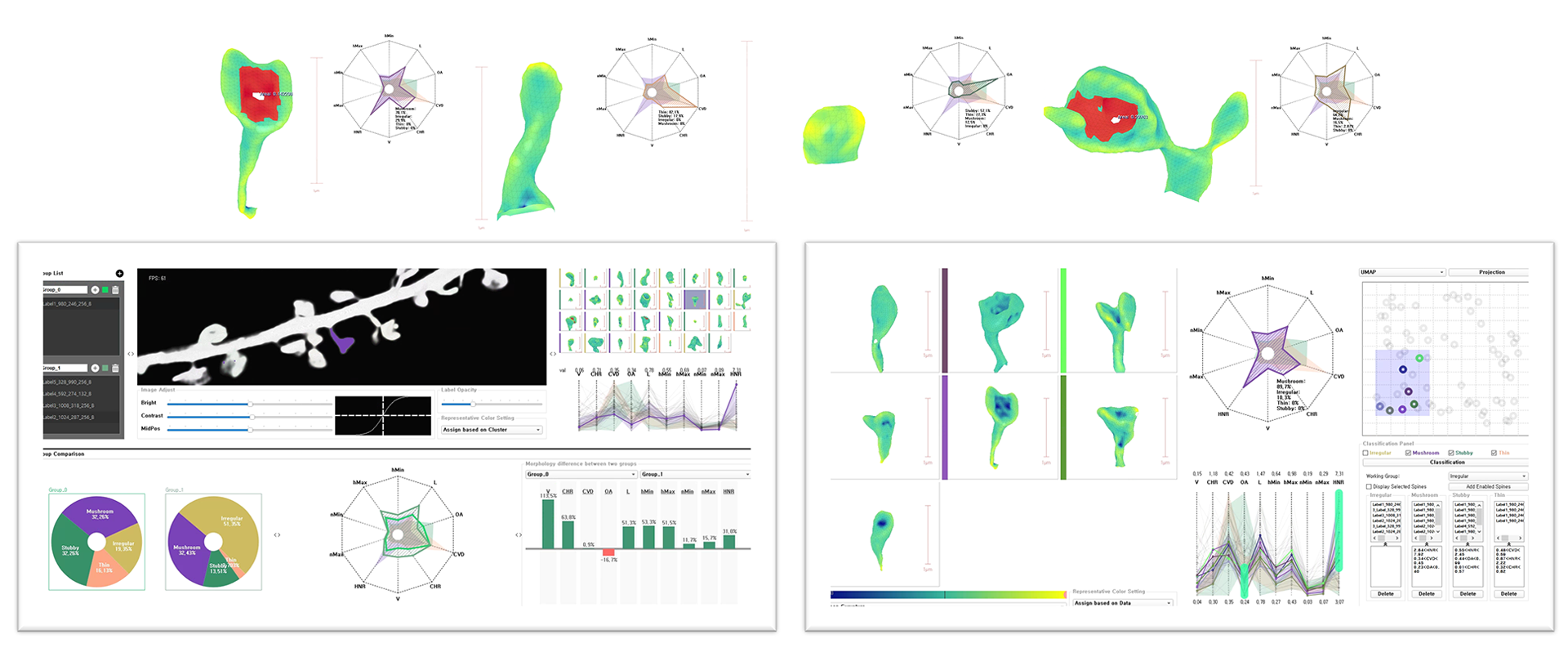DXplorer: A Unified Visualization Framework for Interactive Dendritic Spine Analysis using 3D morphological Features
JunYoung Choi, Sang-Eun Lee, YeIn Lee, Eunji Cho, Sunghoe Chang, Won-Ki Jeong
View presentation:2022-10-20T14:24:00ZGMT-0600Change your timezone on the schedule page
2022-10-20T14:24:00Z

Prerecorded Talk
The live footage of the talk, including the Q&A, can be viewed on the session page, Neuro/Brain/Medical Data.
Fast forward
Keywords
Biomedical and Medical Visualization, Machine Learning, Task and Requirements Analysis, User Interfaces, Intelligence Analysis
Abstract
Dendritic spines are dynamic, submicron-scale protrusions on neuronal dendrites that receive neuronal inputs. Morphological changes in the dendritic spine often reflect alterations in physiological conditions and are indicators of various neuropsychiatric conditions. However, owing to the highly dynamic and heterogeneous nature of spines, accurate measurement and objective analysis of spine morphology are major challenges in neuroscience research. Most conventional approaches for analyzing dendritic spines are based on two-dimensional (2D) images, which barely reflect the actual three-dimensional (3D) shapes. Although some recent studies have attempted to analyze spines with various 3D-based features, it is still difficult to objectively categorize and analyze spines based on 3D morphology. Here, we propose a unified visualization framework for an interactive 3D dendritic spine analysis system, DXplorer, that displays 3D rendering of spines and plots the high-dimensional features extracted from the 3D mesh of spines. With this system, users can perform the clustering of spines interactively and explore and analyze dendritic spines based on high-dimensional features. We propose a series of high-dimensional morphological features extracted from a 3D mesh of dendritic spines. In addition, an interactive machine learning classifier with visual exploration and user feedback using an interactive 3D mesh grid view ensures a more precise classification based on the spine phenotype. A user study and two case studies were conducted to quantitatively verify the performance and usability of the DXplorer. We demonstrate that the system performs the entire analytic process effectively and provides high-quality, accurate, and objective analysis.